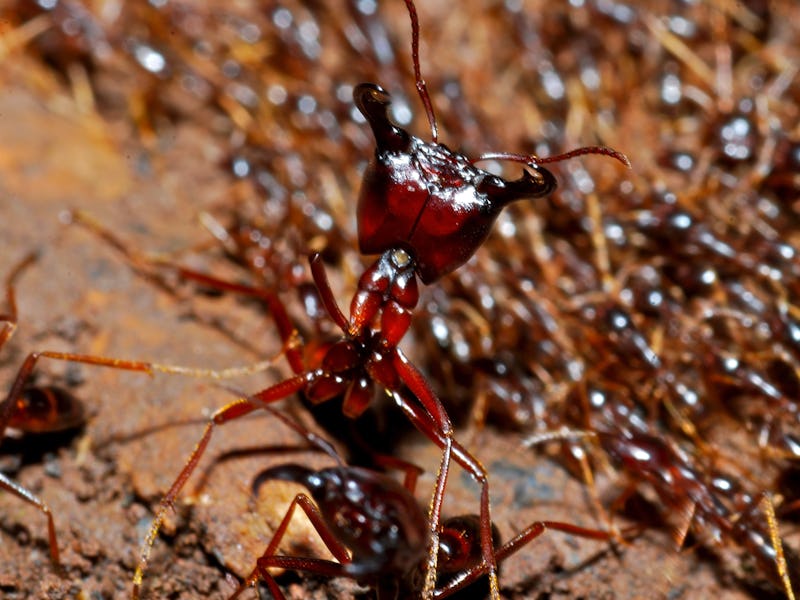Army Ants Not Just Bugging Out
How the bridges of ants could influence future robotics.

Army ants can not only build makeshift bridges by weaving themselves together, but a recent study states they can modify these crossings as necessary.
Anyone who has ever seen of these types of nature films knows…
…the aggressive army ant famously rolls through its environment en masse, swarming over the terrain by linking together (and eating creatures unfortunate enough to get in the way). However, as revealed in the October 19 paper, ”Army ants dynamically adjust living bridges in response to a cost–benefit trade-off,” published in the journal Proceedings of the National Academy of Sciences, the ants are well-aware of where these linked crossings are needed, what’s happening around, and when it’s time to break up the links.
The researchers believe that this discovery could be used in the development of swarm robotics for exploratory and rescue operations. By following the methods used by these particular ants, algorithms could be devised to control swarms of robots to behave in similar, efficient fashion. “Bridges provide a shortcut for foraging ants…we show that bridge location represents…potential implications for human engineered self-assembling systems.”
The team of researchers — a group that includes members from the New Jersey Institute of Technology (Newark, New Jersey), Princeton University (Princeton, New Jersey), George Washington University (Washington DC), Harvard University (Cambridge, Massachusetts), and University of Konstanz (Konstanz, Germany) — observed the bridges could be constructed and disassembled in seconds, or change position in response to happenings in the nearby environment. The duration of these crossings is determined by the ants, as insects in the structure gage the decrease in rate of use by fellow ants. “Our field experiments show that the ants continuously modify their bridges, such that these structures lengthen, widen, and change position in response to traffic levels and environmental geometry,” the piece reads.
It was believed, prior to the study, that these ant structures were mostly fixed in duration. However, the researchers found that “the final position of the structure depended on the intensity of the traffic and the extent of path deviation and was influenced by a cost–benefit trade-off at the colony level, where the benefit of increased foraging trail efficiency was balanced by the cost of removing workers from the foraging pool to form the structure.”
In other words, much like Kenny Rogers sang, these ants “know when to hold ‘em, and know when to fold ‘em.”
According to a quote from co-researcher Dr. Christopher Reid (Department of Biological Sciences, New Jersey Institute of Technology) given to Phys.org, “Artificial systems made of independent robots operating via the same principles as the army ants could build large-scale structures as needed…such swarms could accomplish remarkable tasks, such as creating bridges to navigate complex terrain, plugs to repair structural breaches, or supports to [stabilize] a failing structure.
Here’s an idea of the current capability of swarm robotics: